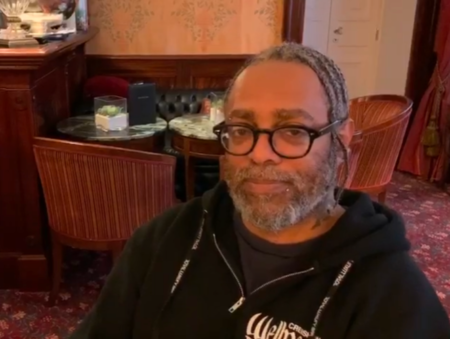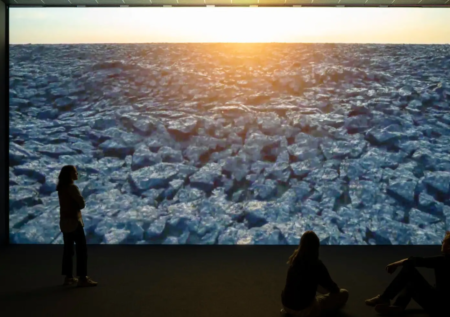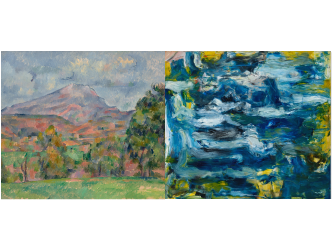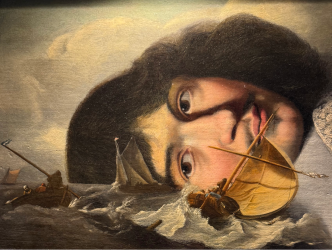Love is the message…
Let’s use the big words: Arthur Jafa (born in 1960) is probably one of the most relevant artists of our time thanks to his creation of three films headed by “Love is the message. The message is death” in 2016, which has been bought by several major museums and global collections, starting with the Metropolitan Museum in New York and Maja Hoffmann’s Luma collection in Arles.
Golden Lion
He also won the Golden Lion at the Venice Biennale in 2019. His first reaction, which was typical of Jafa, on learning that he would be receiving the ultimate Venetian prize, was to declare that he was not aware of its existence.
Outsider and insider
Arthur Jafa likes to feel at once like the outsider and insider. His heart swings between the two…
Exceptional dramatism

Arthur Jafa
That said, his way of marrying found images with selected music, often on the theme of what it means to be African-American and, more broadly, the interactions between humans through the filter of the Internet, is a unique and unprecedented thing, animated by an exceptional dramatism.
Black Lives matter

He has a gift for making something lyrical out of images of decadence and decay. His videos mark an epoch, our own, which is also that of “Black Lives Matter”. In June 2020, when thirteen American and European museums wanted to send out a strong anti-racist message, it was “Love is the message, the message is death” which they screened over forty hours, conjointly at their sites.
Euphoric and pessimistic

Arthur Jafa
I have been following Arthur Jafa since the first exhibition of “Love is the message” at the Met Breuer a few months after it was created. I have already interviewed him several times, from Venice ( See the interview here) to London (See the interview here) via Turin (See the interview here). From one episode to the next he has appeared to be cheerful, even euphoric, or pessimistic and resigned.
The principle of analogy

He is constantly caught, it would seem, between the power of his late success and the pains of his past creative wanderings. He is a highly cerebral artist who works using the association of ideas, through analogy, to the point of drawing a parallel between Mapplethorpe and Caravaggio, for example. Or between traditional Malian Bamana sculptures and contemporary industrial objects.
Meandering thoughts

His meandering thoughts, when expressed, as you can see in the video, mix all kinds of references to reach the end of the demonstration.
Les Cahiers d’Art

In Paris the gallery Les Cahiers d’Art is releasing a publication featuring an exciting series of interviews dedicated to him. It is accompanied by an exhibition.
Louisiana Museum

Until 21 October, the Louisiana Museum in Denmark is dedicating a retrospective to him called Magnumb. “It means a lot and not so much, a neologism.”
A new film

AGHDRA, Louisiana Museum
It was also the occasion to present his new film, AGHDRA. Here we see what seems to be a meditative landscape, composed of a dark ocean with floating forms, all of which is computer-generated. “It’s a way of responding to the people who say that I make movies with found footage. There’s no black figures in it. No socio-political context, but maybe a post-anthropocene organism. The most interesting thing is the music. I wanted there to be multiple interpretations. In AGHDRA it’s about a return and a fantasy at the same time.”
Kerry James Marshall
He evokes the great African-American painter Kerry James Marshall, who he calls his “fellow traveller”, and who shares with him the quest to express a black reality that is just as universal as white reality.
Robert Mapplethorpe

Robert Mapplethorpe
In April the Barbara Gladstone gallery in New York appointed him as curator of an exhibition of photos dedicated to Robert Mapplethorpe. He says of the American photographer, very accurately, “he has charisma, elegance, classicism, but at the same time he refuses to exist within boundaries. In this sense his work is very similar to that of Caravaggio.”
Bamana sculptures

Arthur Jafa
In Paris the exhibition features superimposed photographs from inside the metro and urban materials like pipes and rails. He describes how in the 2000s, when he was in Mali, he was struck by a book by Sarah C. Brett-Smitt, “The Making of Bamana Sculptures”, “I became very preoccupied by the fact that many African artefacts took the form of these Atlases, these figures who act as seats and hold something up over their heads.”
Symbolism
He evokes a discussion with Hortense Spillers, the black feminist scholar who is a specialist on the black diaspora and the tensions between Africans and the black populations of the world. “An African who is a victim of slavery found himself thus reduced to a technological object.” To close with the thought that manufactured objects just like the traditional objects of Benin, for example, are endowed with a certain symbolism for the black community.
Kanye West
In 2020 he created a music video for the song “Wash Us In The Blood” by Kanye West. “Kanye is an incredible collaborator. He knows how to conduct people.”
A new Motown form films

Recently he created a film company, “Sunhaus”. “My dream has always been to create a film company that would be a Marlow Motown (1). Black Americans have never been able to express themselves in this arena.” We impatiently await what comes next.
www.cahiersdart.com/en/
(1) It’s at Marlow that Motown was located, an American record company that has become legendary within black American music.
Support independent news on art.
Your contribution : Make a monthly commitment to support JB Reports or a one off contribution as and when you feel like it. Choose the option that suits you best.
Need to cancel a recurring donation? Please go here.
The donation is considered to be a subscription for a fee set by the donor and for a duration also set by the donor.




